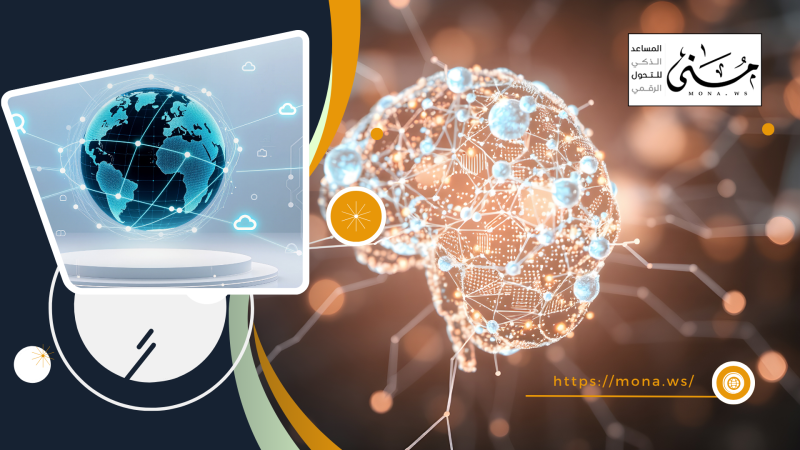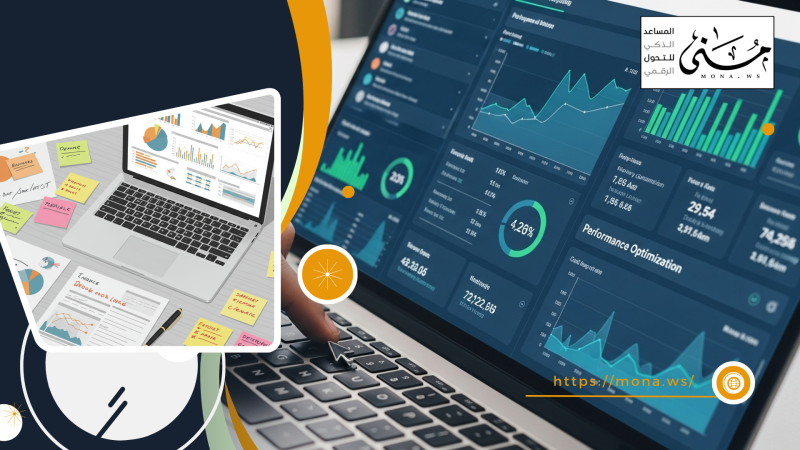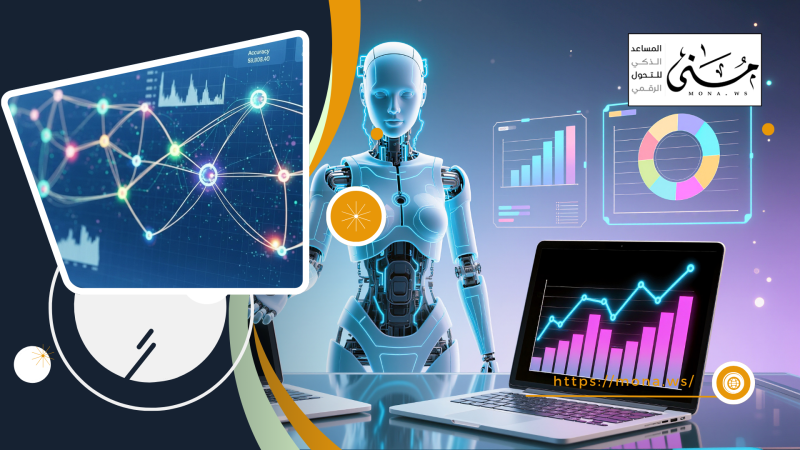In the past, workflow management was They relied on paper forms, hand signatures, and correspondence between departments. Then came the first digital transformation, introducing electronic versions of these forms within traditional software. However, the truth is that digitization alone was not enough .
Today, with the rise of smart automation , we are witnessing a new leap toward systems capable of managing workflow autonomously and proactively , without direct human intervention .
What is intelligent workflow automation?
Smart Workflow Automation refers to To use advanced technologies such as artificial intelligence (AI) , decision engines , and data analytics to manage and execute workflows within organizations in an intelligent, adaptive, and proactive manner. The goal is not limited to eliminating paper or converting forms into digital files, but rather to building systems that think, decide, and learn . Here is a detailed explanation of the components of this automation :
Decision making based on rules and data
In a traditional system, requests are referred to specialized employees for manual decision-making. With intelligent automation, the system has a built-in decision engine that analyzes each request based on business rules (such as internal policies, available balance, job type, and authority limits) and automatically issues the appropriate decision .
For example, a short leave request from an employee with sufficient balance is automatically approved without going through any manager, while non-compliant requests are automatically sent for review .
Automatically assign tasks to the appropriate employee
Instead of manually assigning tasks or following a fixed path, intelligent systems assess the situation and automatically assign the task based on criteria such as :
-
Employee's technical specialization
-
Current availability in the table
-
Number of tasks assigned to him
-
Its geographical or administrative location
This way, tasks are assigned to those who can handle them efficiently, without wasting time or accumulating work on one side, which achieves fair distribution and improves collective performance .
Send dynamic notifications and alerts
Intelligent automation systems send immediate alerts to stakeholders at every stage, using multiple channels such as email, app alerts, or instant messages. Importantly, these alerts are not static , but dynamic, meaning :
-
Sent based on actual status (delay, glitch, error)
-
It varies depending on the user type (employee, supervisor, manager)
-
Attached are recommendations or direct links to take appropriate action.
The result: No need for manual follow-ups or repeated calls. Everyone knows when to act and what to do .
Generate reports upon completion of tasks
When the work cycle is completed, the system produces immediate performance reports, such as :
-
Duration of implementation of each stage
-
Total time to complete the process
-
Latecomers or more active parties
-
Reasons for discontinuation or return
-
Quality and compliance indicators
These reports are presented in the form of dashboards , enabling management to make decisions based on data, not guesswork, and can be scheduled to be sent automatically on a regular basis .
Learning from past patterns to improve flow
The most important feature of intelligent automation is its ability to continuously learn . The system analyzes thousands of previous operations and extracts from them :
-
Steps that cause frequent delays
-
People or departments who process orders most efficiently
-
Paths that can be combined or simplified
Based on this data, the system can suggest automated workflow improvements or automatically modify rules, meaning each new process is faster and smarter than the previous one .
The future of route management via platforms such as DocSuite Workflow
In today's organizations, speed and efficiency are no longer a luxury, but rather a fundamental requirement for ensuring competitiveness and operational efficiency. With increasing business pressures and the diversity of administrative, technical, and financial demands, traditional workflow systems—even digital ones—are no longer able to keep pace with the increasing complexity and diversity of modern work environments .
This is where a new generation of pipeline management systems, such as DocSuite Workflow , emerges, leading a radical shift in how internal processes are managed. It's no longer about "who sends the request to whom?" Rather, it's about how the request is automatically processed, intelligently processed, and ultimately reached the correct decision without delay, repetition, or tedious manual intervention .
DocSuite It doesn't just offer a static workflow, but rather an intelligent platform that understands the organization's structure, adapts to the type of transaction, and controls the flow of tasks in a dynamic, flexible manner. The system combines rules, permissions, real-time data, and integration with other systems, creating a workflow that behaves like a seasoned administrative employee... but never sleeps .
Automatic route creation based on request type
In intelligent systems such as With DocSuite Workflow , employees no longer need to manually define the steps in the process or determine who will approve their request. The system automatically reads the type and content of the request and creates a workflow that aligns with the organization's internal policies. For example, the approval path for a "hardware purchase" request differs from that for a "vacation request," and the system automatically adjusts for this, reducing the need for technical expertise and speeding up the process from the start .
Intelligent task routing
One of the manifestations of intelligence in DocSuite It automatically assigns tasks to the most appropriate person, based on organizational data, level of authority, or even the current workload. If the direct manager is unavailable, the system can automatically assign the task to the delegate or alternate. It can also route the request to the nearest geographical location or an employee specializing in a specific type of transaction. This ensures continuity and reduces waiting time and delays resulting from staff absences or a backlog of tasks .
Automated approval or rejection based on rules
The system allows you to program work policies and procedures in the form of "smart rules," such as self-approval thresholds, financial policies, or signature requirements. When a new request is submitted, it is checked. DocSuite Automatically, it checks its compliance with these rules and issues the appropriate decision without human intervention in routine cases. Only exceptional or non-compliant cases are referred for review. This saves significant time and ensures strict adherence to policies without delay.
Integration with other systems
The platform is distinguished by DocSuite Workflow can connect with other systems such as ERP , HR, finance, or technical ticketing systems. When a leave request is approved, for example, the balance is automatically deducted from the HR system. If a purchase order is approved, the system immediately creates a disbursement order in the financial system. These interconnected processes reduce double entry, prevent inconsistencies, and increase execution accuracy across different departments .
Predictive analytics and improvement recommendations
He does DocSuite By collecting and analyzing data from each workflow, such as average processing time, number of returns, deadlocks, and most frequent stages, the system can suggest process improvements, such as eliminating a redundant step, merging two duplicate stages, or redistributing tasks between departments. It can also provide proactive management alerts in the event of recurring delays in a particular department, helping to build a data-driven culture of continuous improvement .
Corporate Benefits of Intelligent Automation
Implementing intelligent automation in workflows doesn't just speed up tasks or reduce costs; it also radically transforms management culture, transparency, and decision-making . Here are the most significant benefits organizations reap when adopting intelligent systems like DocSuite Workflow :
Speed up transactions by up to 80 %
By automatically identifying paths, automatically directing tasks, and making decisions based on rules, the processing time for each request is significantly reduced. Transactions that used to take days between departments can now be completed in hours or minutes. This not only speeds up work, but also enhances a positive impression among employees and customers about the organization's efficiency .
Reducing human intervention and human errors
Intelligent systems don't get tired, forget, or make mistakes due to workload or repetition. Automation ensures the correct path is followed and policies are accurately implemented, reducing manual entry errors or human omissions and sparing the organization time and administrative costs .
Achieve full transparency in order tracking
Each user can track the status of their request at any time, see who is currently reviewing it, and what the next step is. Management can also view open paths, pending stages, and completed actions. This transparency builds trust and reduces side messages and reviews that consume the administrative team's time .
Enhancing compliance with policies and procedures
Using a built-in rules engine, automation ensures that every request is subject to approved policies, and no exceptions are made without documented procedures. This improves the quality of internal control, facilitates audits and reviews, both internally and externally, and supports compliance with governance standards.
Improve employee satisfaction due to speed of completion
When employees feel their requests are processed quickly, without delay, and in a fair and transparent manner, job satisfaction increases. Eliminating repetition and manual procedures also reduces stress and frees up time to focus on quality work rather than repetitive administrative tasks .
-
Support decision making based on real-time data
Every step is documented and analyzed, providing management with a detailed view of the performance of teams and departments. Analytical reports can be generated on bottlenecks, execution efficiency, order volume, and improvement points. This analytical insight transforms the workflow from an execution tool to a source for strategic decision-making .
in conclusion, The future of management is no longer measured solely by speed of response, but rather by an organization's ability to act intelligently without manual intervention and make immediate decisions based on accurate data . With the development of platforms like DocSuite Workflow , it has become possible to transform workflows from "follow-up" systems to "command" systems, operating silently but efficiently in the background of every administrative process .
Intelligent automation is not just a technology to speed up processes. It is a new work philosophy that believes that employees' time should be invested in thinking, not repetition. It believes that decisions should be based on rules, not moods. It believes that data should not be merely archives, but rather a source of insight and development .
By adopting an intelligent workflow, an organization can eliminate administrative overhead, reduce bottlenecks, and build a flexible, transparent, and proactive organizational culture. Every request takes the shortest route to its destination, and every action is implemented within a self-monitoring and self-improvement system .
that DocSuite It not only provides a means to automate transactions, but also provides a dynamic platform for building a sustainable digital administrative structure that grows with the organization, evolves with its needs, and adapts to changing structures and fields .
In short : The future is not managed by papers... but by a smart plan that thinks, implements and learns .










Comments
Add New Comment